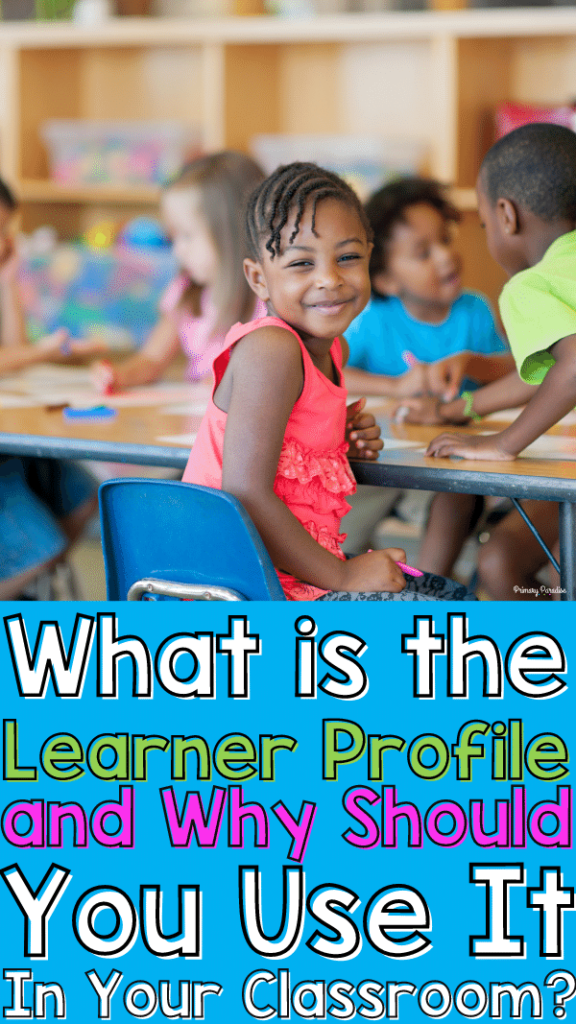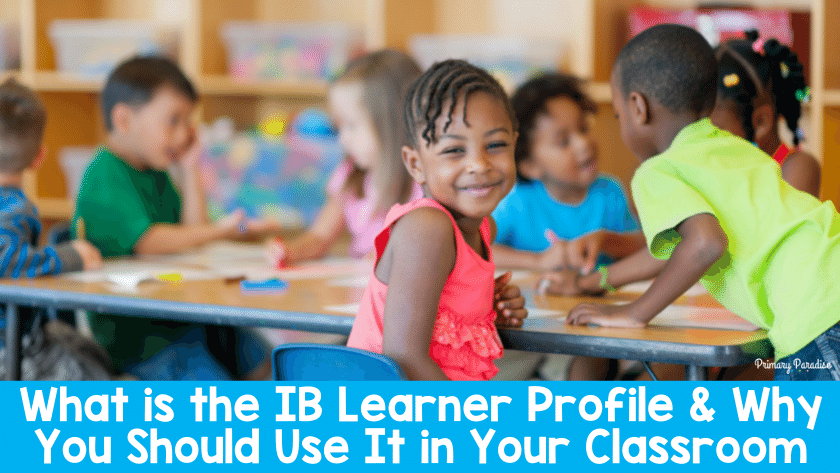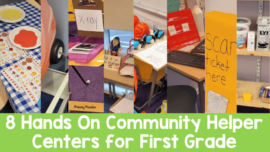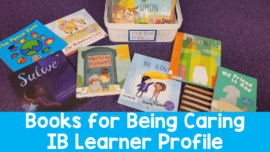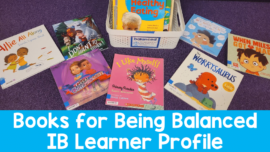The IB Learner profile is a great place to start if you’re wondering what characteristics you want to encourage and foster in your students. These 10 skills are incredibly important and focusing on them can transform the way things run in your classroom. It can also help your students become strong global citizens.
If you’re wondering what a global citizen is and why you should focus on your classroom, you can read my last post about that here. In order to help our students become stronger learners, more well rounded humans, and more globally minded, we need to focus on fostering the 10 characteristics of the IB learner profile. Even if you’re not teaching in an IB school, the learner profile focuses on things all of our students will benefit from. So, let’s take a look at the characteristics of the IB learner profile.
What are the Characteristics of the IB Learner Profile
The IB learner profile encompasses 10 characteristics, or abilities, that help students become more well rounded people. These skills are not only related to school, but overall mental, emotional, and physical well being. In our next few posts, I’ll be share how you can actually foster these skills in your classroom through technology based projects. Here is a brief overview of the profile skills.
Inquirers
The first characteristic of the IB learner profile is that our students will be inquirers. Inquirers are curious about the world around them. From there, we can teach our students how to research to discover more information and this brings about a love of learning. Wouldn’t it be great to have students who want to research because they love to learn about new things?
Knowledgeable
The second characteristic is helping our students become knowledgeable. Specifically, we should aim to help our students gain an in-depth understanding about a broad range of topics. And, most importantly, their knowledge is balanced. This means that they can look at information and examine it from all sides.
Thinkers
Next, we want our students to know how to think. Of course, as teachers, we want our students to be able to think for themselves, but we have to teach them how to think so they can determine what they think. We want our students to be critical and creative thinkers. And, ultimately, we want them to use their thinking skills to become problem solvers.
Communicators
Another characteristic of the IB learner profile is that our students are strong communicators. They can communicate clearly and confidently. They can also communicate through creative means. And, we want them to know how to collaborate while communicating. The learner profile focuses on the listening part of communication as well.
Principled
Students should also be principled which means, whatever they’re doing, they do it with integrity, honesty and in a responsible way. How wonderful would the world be in more adults were principled in their choices?
Open Minded
Since the IB learner profile is focused on helping create global citizens, a big facet of that is helping students be open minded. Students should be willing to grow. They (and we) need to be understanding, knowledgeable, and open minded about the cultures, perspectives, values, and traditions of others. Understanding the reasoning behind how and why other people do things doesn’t mean you have to agree, but it does help you better understand their viewpoint.
Caring
The seventh characteristic is for our students to be caring. We want to build empathy and compassion into our classroom. This one is particularly important because empathy and compassion will lead to service action, or students wanting to do something about problems they learn about.
Risk-takers
Next, we want students to be risk takers who are courageous and willing to try new things. Risk takers have a desire to explore the world and are determined to give new experiences a try.
Balanced
One of the best parts of the learner profile is that it doesn’t just focus on academic learning. Instead, it focuses on the whole child. We want to help our students be balanced through intellectual, physical, and emotional development.
Reflective
Lastly, we want students to be able to reflect on their learning and their actions. It can be hard for students to be critical of themselves, or maybe they’re too hard on themselves, so this skill must be modeled and taught. We want students to be able to self-assess after a lesson, an activity, a task, a project, a day, or a school year.
So, how do we help students gain those skills?
This all might seem like an idealistic tall order, and it is, but it is also totally doable. We can incorporate development of these skills into our lesson. In my next few posts, I’ll share how you can do this and some projects (as well as free project templates) that will help develop these skills in your students.
